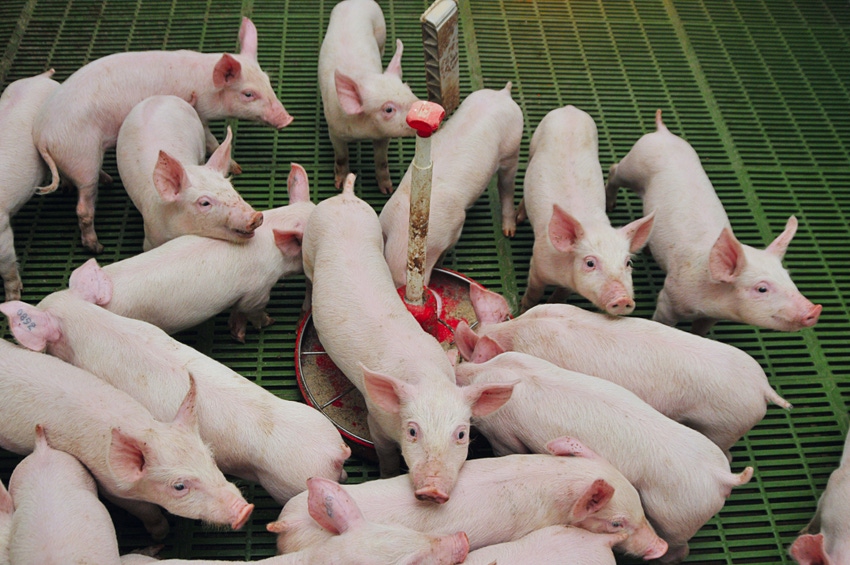Feed input costs escalating
China's efforts to recover from African swine fever causing huge shift in demand curve.
February 1, 2021

China purchased 6.0 million metric tons (mmt) of U.S. corn. during the week ending Jan. 30. Part of this buying spree included a sale on Friday, Jan. 29, of 2.1 mmt, the largest corn sale made since 1989. It is estimated that China has now purchased 20 mmt of U.S. corn to date. Many believe they may stretch this to as high as 24 mmt before they are done. This is approaching 1 billion bushels of U.S. corn headed for China.
The Chinese are rapidly expanding their hog herd that was decimated by African swine fever (ASF) in late 2018 and most of 2019. While reports from China are considered inaccurate, they are telling the world that their herd is back to 90% of the pre-ASF herd size. What does appear accurate is that the Chinese are totally changing the way they raise hogs. They are moving away from millions of courtyard small producers to very large integrator producers. This is a major gamble. If ASF gets into these large mega houses, the result will be disastrous. Still, they are speculating that these large super units will have more success in controlling disease. This approach is likely to be correct in the long run but could experience some major speed bumps in the short term.
What appears to be happening is these mega production facilities require much more corn for feed than did the small courtyard approach, thus the reason for the huge shift in the demand curve for China. Imagine trying to rebuild a hog herd with corn prices above $11.00/bushel. Pork prices in China are more than three times the price of U.S. pork prices.
With these price relationships intact, it only makes sense for China to continue importing large amounts of pork. Their well-stated goal of pork self-sufficiency is likely years away. Chinese citizens continue to suffer hardships. They are currently consuming far less pork than desired, because prices are simply too high. The Chinese government realizes that ultimately, and eventually, if this is not corrected, it could threaten their very existence. In the short term, they will pay any price for corn and any price for pork.
We will likely not know the whole story—the real story—for years, but it appears that China is currently embroiled in a serious food insecurity situation. Mostly due to quality concerns, they have liquidated a vast majority of their corn reserve over the last several years. With poor timing and bad luck, they had a poor corn crop last year, which is likely much smaller than currently reported. COVID-19 caused severe problems in China just prior to their planting season. Then, devastating floods during the growing season wiped out a portion of their crops. On top of this was the smaller than expected U.S. crop and a less than ideal growing season in South America. Finally, it appears the government has misjudged the corn consumption demanded by the new mega production facilities.
So, what does this all mean for U.S. hog producers? Sadly, and incredibly, with a major global food shortage occurring, many U.S. pork producers are still losing money. Rightly so, we are contracting our sow herd in response to massive losses in the industry over the last couple of years. Smaller U.S. pork production is on the horizon. The lower production will likely be met with rising demand in the wake of COVID-19, which is the reason I said last month that there will be a rocket-ship launch in hog prices. This has not developed…yet. Deferred prices are grinding higher, but there’s little rocket-ship-type action to the move. My upside targets in the June hog futures contract remain at $102.00/cwt. and possibly as high as $105.00/cwt.
We are not actively hedging pork production for our producers. Why hedge when you are losing money? Look for butcher hog numbers to begin dropping off, consistently running below year-ago levels, as well as for weights to begin trending downward and a hole in numbers to emerge at some point this spring or early summer.
I have been told by multiple sources that PRRS and PEDv have been terrible problems this winter.
What we are doing is actively hedging feed costs for our livestock producers. Recent strategies include locking in prices for next year using options on the sharply discounted December new crop contract. For specific strategies and/or executing assistance, feel free to contact me.
About the Author(s)
You May Also Like





